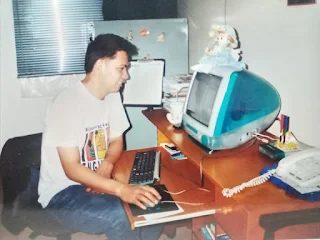A Gen Xer, you feel fortunate to have witnessed the evolution of digital media all these years.
In the 1990s, you began learning how to operate a computer and begin typing into the green screens using WordStar, WordPerfect, and Fox Database.
You used large floppy diskettes to input—encode—process and print your thesis using the Dot Matrix printer in your school paper’s office.
In the 2000s, you began e-mailing your friends and families a lot and watching trailers and movies on YouTube until the wee hours. You also began blogging, finding so much fun in embedding images and photos onto your essays and blogs that you published on multiply.com or blogger.com.
In the 2010s, you sent videos, too, via your e-mails and shared news, photos, and videos with your friends on social media. You also looked forward to how the videos would stream into your news feed on Facebook and Twitter accounts.
You also joined LinkedIn, Instagram, and Vimeo, among many others, now being so overwhelmed by so much information just using your handheld gadget. You also joined and maintained accounts on Goodreads and Tumblr. For you, the sleek layout of photos and Tumblr was indispensable.
In the 1990s, you went to computer laboratories to encode your academic projects—and the dreaded senior thesis in your university. In the 2000s, you needed to contact your internet service provider so they could fix your company’s troublesome internet modem.
And in the 2010s, you would have to be hooked on a good Wi-Fi if you were to video-stream and witness Pope Francis’s visit to the Philippines outside the country’s capital of Manila in real-time.
All these multi-modal conveniences, through the years, have reinforced any information that you consumed. They have leveled up your interaction and you have become a more learned person owing to these affordances—but most importantly, they have also allowed you to produce knowledge that you can now share with the rest of the world.
#DigitalEvolution
#GenerationXer
#ThenAndNow


